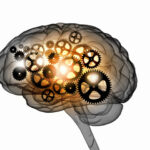Social Anxiety Disorder, previously called Social Phobia, is an anxiety disorder in which a person has an excessive and unreasonable fear of social situations. People with social anxiety disorder have an intense, persistent, and chronic fear of being watched and judged by others and of doing things that will embarrass them. They can worry for days or weeks before a dreaded situation. This fear may become so severe that it interferes with work, school, and other ordinary activities, and can make it hard to make and keep friends. Social anxiety disorder usually begins in childhood or adolescence, and children are prone to clinging behavior, tantrums, and even mutism.
A person with social anxiety disorder is afraid that he or she will make mistakes and be embarrassed or humiliated in front of others. The fear may be made worse by a lack of social skills or experience in social situations. The anxiety can build into a panic attack. As a result of the fear, the person endures certain social situations in extreme distress or may avoid them altogether. In addition, people with social anxiety disorder often suffer “anticipatory” anxiety, the fear of a situation before it even happens, for days or weeks before the event. In many cases, the person is aware that the fear is unreasonable, yet is unable to overcome it. People with social anxiety disorder may be afraid of a specific situation, such as speaking in public. However, most people with social anxiety disorder fear more than one social situation.
Other situations that commonly provoke anxiety include:
• Eating or drinking in front of others (such as in a restaurant)
• Writing or working in front of others (such as in a classroom or at an office meeting)
• Being the center of attention
• Interacting with people, including dating or going to parties
• Asking questions or giving reports in groups
• Using public toilets
• Talking on the telephone
What are the Symptoms of Social Anxiety Disorder?
Social anxiety disorder can be limited to one situation (such as talking to people, eating or drinking, or talking in front of a group) or may be so broad (such as in generalized social anxiety disorder) that the person experiences anxiety around almost anyone other than the family. Physical symptoms that often accompany social anxiety disorder include blushing, profuse sweating, trembling, nausea, and difficulty talking. When these symptoms occur, people with social anxiety disorder feel as though everyone is looking at them and observing their every move. Symptoms may be so extreme that they disrupt daily life. People with this disorder may have few or no social or romantic relationships, making them feel powerless, alone, or even ashamed. Many people with social anxiety disorder feel that there is “something wrong,” but don’t recognize their feeling as a sign of illness. Symptoms of social anxiety disorder can include:
• Intense anxiety in social situations
• Avoidance of social situations
• Physical symptoms of anxiety, including confusion, pounding heart, sweating, shaking, blushing, muscle tension, upset stomach, and diarrhea
• Children with this disorder may express their anxiety by crying, clinging to a parent, or throwing a tantrum
How Common is Social Anxiety Disorder?
Social anxiety disorder affects about 15 million American adults. Women and men are equally likely to develop the disorder, which usually begins in childhood or early adolescence. The typical age of onset is 13 years old. 36 percent of people with social anxiety disorder report symptoms for 10 or more years before seeking help.
What Causes Social Anxiety Disorder?
There is no single known cause of social anxiety disorder, but research suggests that biological, psychological, and environmental factors may play a role in its development.
Biologically: Social anxiety disorder may be related to an imbalance of the neurotransmitter serotonin. Neurotransmitters are special chemical messengers that help move information from nerve cell to nerve cell in the brain. If the neurotransmitters are out of balance, messages cannot get through the brain properly. This can alter the way the brain reacts to stressful situations, leading to anxiety. In addition, social anxiety disorder appears to run in families. This means that the disorder may be passed on in families through genes, the material that contains instructions for the function of each cell in the body.
Psychologically: The development of social anxiety disorder may stem from an embarrassing or humiliating experience at a social event in the past.
Environmentally: People with social anxiety disorder may develop their fear from observing the behavior of others or seeing what happened to someone else as the result of their behavior (such as being laughed at or made fun of). Further, children who are sheltered or overprotected by their parents may not learn good social skills as part of their normal development.
How is Social Anxiety Disorder Diagnosed?
Social anxiety disorder is diagnosed when people become overwhelmingly anxious and excessively self-conscious in everyday social situations. Social anxiety disorder may be linked to other mental illnesses, such as panic disorder, obsessive-compulsive disorder, and depression. In fact, many people with social anxiety disorder initially see the doctor with complaints related to these disorders, not because of social anxiety symptoms. If symptoms of social anxiety disorder are present, the doctor will begin an evaluation by asking questions about your medical history and performing a physical exam.
Although there are no laboratory tests to specifically diagnose social anxiety disorder, a medically-trained doctor, such as a psychiatrist, may use various tests to make sure that a physical illness isn’t the cause of the symptoms. In addition to this, psychiatrists and psychologists use specially designed interview and assessment tools to evaluate a person for an anxiety disorder. The doctor bases his or her diagnosis of social anxiety disorder on reports of the intensity and duration of symptoms, including any problems with functioning caused by the symptoms. The doctor then determines if the symptoms and degree of dysfunction indicate social anxiety disorder.
How is Social Anxiety Disorder Treated?
People with social anxiety disorder suffer from distorted thinking, including false beliefs about social situations and the negative opinions of others. Without treatment, social anxiety disorder can negatively interfere with the person’s normal daily routine, including school, work, social activities, and relationships. Social anxiety disorder can be successfully treated with certain kinds of psychotherapy or medications.
The most effective treatment currently available is cognitive-behavior therapy (CBT). Medication may also be used to help ease the symptoms of social anxiety disorder so that CBT is more effective. Drugs may also be used alone. There are several different types of medications used to treat social anxiety disorder, including: antidepressants (like Celexa, Lexapro, Paxil and others); anti-anxiety medications (such as Xanax, Klonopin, Valium and Ativan); beta-blockers (such as Propranolol), often used to treat heart conditions, may also be used to minimize certain physical symptoms of anxiety, such as shaking and rapid heartbeat. Counseling to improve self-esteem and social skills, as well as relaxation techniques, such as deep breathing, may also help a person deal with social anxiety disorder.




